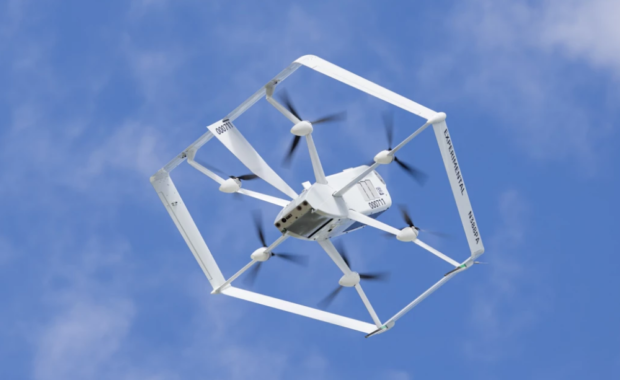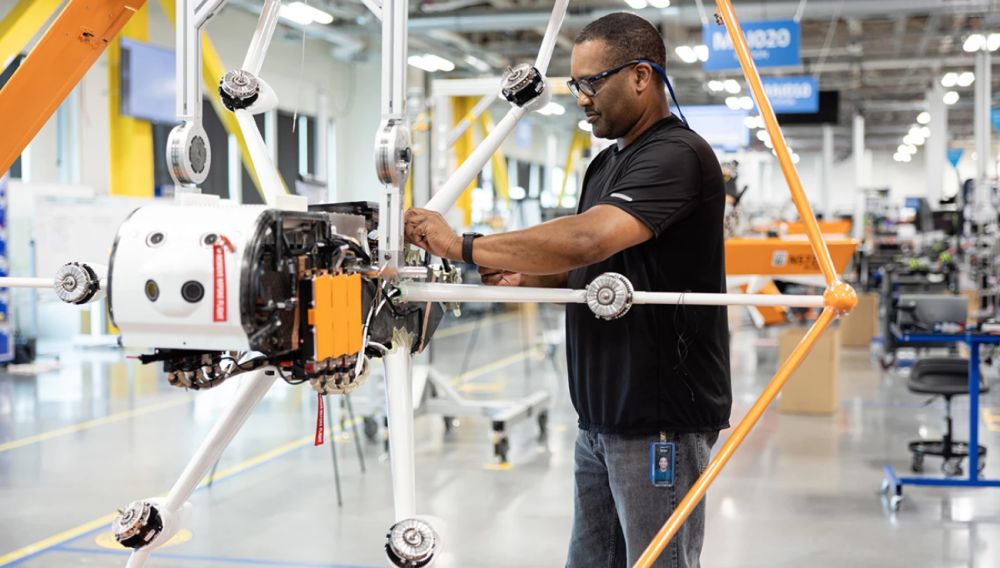Amazon is taking steps to get its long-delayed drone delivery project off the ground. The company announced that it would launch its inaugural drone delivery service in the town of Lockeford, California, later this year after it receives the green light from the Federal Aviation Administration.
If the regulatory approval goes through, it will be a major milestone for Amazon, which has been promising some version of aerial package delivery for almost a decade. The company has had some major setbacks, including a handful of crashes, reports of alleged safety lapses, and high turnover. Lockeford has historic links to the aviation industry. The community boasts one of the early pioneers of aviation—Weldon B. Cooke, who built and flew early planes in the early 1900s—as a former resident. Now, over a century later, residents will get the opportunity to sign up for free drone delivery on thousands of everyday items.
Lockeford residents will play an important role in defining the future. Their feedback about Prime Air, with drones delivering packages in their backyards, will help us create a service that will safely scale to meet the needs of customers everywhere—while adding another innovation milestone to the town’s aviation history.
“Lockeford residents will soon have access to one of the world’s leading delivery innovations,” said California State Assemblyman Heath Flora, whose district includes Lockeford. “It’s exciting that Amazon will be listening to the feedback of the San Joaquin County community to inform the future development of this technology.”
Amazon says it is also developing technology to improve obstacle avoidance, both on the ground and in the air. And it is working on enabling its drones to operate Beyond the Visual Line of Sight (BVLOS), which is a technical term that describes the operation of drones at distances outside the normal visible range of the pilot.
We designed our sense-and-avoid system for two main scenarios: to be safe when in transit, and to be safe when approaching the ground. When flying to the delivery location, the drones need to be able to identify static and moving obstacles. Our algorithms use a diverse suite of technologies for object detection. Using this system, our drone can identify a static object in its path, like a chimney. It can also detect moving objects on the horizon, like other aircraft, even when it’s hard for people to see them. If obstacles are identified, our drone will automatically change course to safely avoid them. As our drone descends to deliver the package into a customer’s backyard, the drone ensures that there’s a small area around the delivery location that’s clear of any people, animals, or other obstacles.
But drone delivery companies have to be certified by the FAA, just like companies that fly commercial aircraft. That means receiving the agency’s Part 135 certification, which enables companies to operate a commercial drone delivery service. Amazon has received approval to operate its drones BVLOS but is still waiting for its commercial operation certification. Wing, which is a division of Alphabet, and UPS have both received Part 135 certification.
Former Amazon CEO Jeff Bezos first announced 30-minute drone deliveries in 2013. In 2019, the company previewed a redesign of its Prime Air delivery drone that has the ability to fly vertically and hinted at launching drone deliveries later that year — a promise that went unfulfilled.
The program has been beset by problems in recent years, including five crashes over the course of a four-month period at the company’s testing site in Pendleton, Oregon. Some former employees told reporters that the program felt rushed and that workers who raised safety concerns were being fired. Amazon argued that safety was a top priority.
Drone deliveries were supposed to revolutionize the movement of goods around cities, with companies like Amazon, Wing, and Uber promising to set up large-scale operations in the near future. Instead, the technology has mainly focused on small-scale experiments, delivering vaccines and blood to remote locations. In the US, drone delivery has generally been limited to smaller towns, where land usage is less crowded and complex.
Source: The Verge; Press Release


